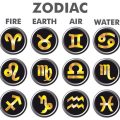1. The Fascination with Palmistry in Modern America
Palmistry, also known as chiromancy or hand analysis, has found a unique place in American culture. While its roots can be traced back to ancient civilizations, today’s Americans are more curious than ever about what their palms might reveal about their personalities and life paths. From casual conversations at parties to popular social media trends, palm reading is no longer just a mystical practice—it’s a fun and engaging way for people to explore themselves and connect with others.
Why Are Americans So Interested in Palmistry?
In the United States, palmistry appeals to a wide range of people. Some see it as an entertaining icebreaker, while others look for deeper meaning and personal insight. The rise of wellness culture, self-discovery apps, and interest in alternative spirituality have made hand reading a go-to topic for those seeking a fresh perspective on personality traits and destiny.
Palmistry in Everyday Life
It’s not uncommon to find palm readers at local fairs, farmers’ markets, or even corporate events. Many Americans view palmistry as a light-hearted way to bond with friends or spark curiosity during gatherings. For some, it’s about finding new ways to understand themselves; for others, it’s just plain fun.
What Hand Shapes Represent in American Palmistry
| Hand Shape | Common Traits Associated | Cultural Reference |
|---|---|---|
| Square Palm | Practical, grounded, reliable | The “all-American” hard worker |
| Long Palm | Creative, intuitive, imaginative | The “dreamer” or artist persona |
| Short Fingers | Action-oriented, decisive | “Go-getter” attitude seen in entrepreneurs |
| Long Fingers | Detail-focused, analytical | The planner or strategist archetype |
This modern fascination with hand analysis isn’t just about predicting the future—its about understanding ourselves and how we fit into the world around us. As American society continues to embrace individuality and personal growth, palmistry remains an intriguing tool for self-reflection and conversation.
2. The Four Main Hand Shapes and Their Meanings
When it comes to palmistry, hand shapes are more than just physical features—they can give us unique insights into our personalities and how we interact with the world. In Western palmistry, there are four core hand shape categories: Earth, Air, Water, and Fire. Each type is linked to certain personality traits that many people find surprisingly accurate. Let’s take a closer look at what your hand shape might say about you.
Earth Hands
Features: Square palms and short fingers.
Personality Traits: Practical, grounded, reliable, and down-to-earth. People with earth hands are often steady and prefer routines. They’re likely to value stability and feel comfortable when life follows a predictable path.
Air Hands
Features: Square or rectangular palms with long fingers.
Personality Traits: Curious, analytical, communicative, and intelligent. Those with air hands are thinkers—they love learning new things and often enjoy lively conversations. They might get restless if they don’t have enough mental stimulation.
Water Hands
Features: Long palms with long fingers.
Personality Traits: Sensitive, creative, intuitive, and empathetic. Water-handed folks tend to be artistic or deeply in tune with their emotions. They often pick up on other people’s moods easily and may need time alone to recharge.
Fire Hands
Features: Square or rectangular palms with short fingers.
Personality Traits: Energetic, passionate, confident, and spontaneous. People with fire hands love taking initiative and living life to the fullest. They’re natural leaders who thrive on excitement and new experiences.
A Quick Comparison of the Four Hand Shapes
| Hand Shape | Palm | Fingers | Main Personality Traits |
|---|---|---|---|
| Earth | Square | Short | Practical, stable, reliable |
| Air | Square/Rectangular | Long | Analytical, communicative, curious |
| Water | Long | Long | Sensitive, creative, intuitive |
| Fire | Square/Rectangular | Short | Energized, passionate, confident |
How to Identify Your Hand Shape?
If you want to discover which hand shape you have, simply observe the length of your palm compared to your fingers. Use the descriptions above as a guide! Each shape offers its own strengths—embrace yours as part of what makes you unique.

3. What Your Palm Lines Say About You
When it comes to palmistry, your palm lines are just as important as the overall shape of your hand. In American pop culture, reading these lines is often seen as a fun way to learn more about yourself or your friends. Let’s dive into the most popular palm lines: the heart line, the head line, and the life line. Each line is believed to offer a glimpse into different aspects of your personality and life path.
The Three Main Palm Lines
| Palm Line | What It Represents | Common Interpretations in US Culture |
|---|---|---|
| Heart Line | Emotions & Relationships | If its deep and clear, people may see you as open-hearted and loving; if its faint or broken, it might mean youre more reserved with emotions. |
| Head Line | Intellect & Mindset | A long head line can suggest you’re thoughtful and logical, while a short one might point to someone who’s more spontaneous or practical. |
| Life Line | Vitality & Life Path | A strong, curved life line is often said to indicate vitality and adventure; a straight or faint line could mean you’re careful or introverted. |
How Americans View Palm Reading Today
Palm reading has popped up in everything from Hollywood movies to county fairs across the United States. While many people enjoy it for entertainment, some believe there’s real insight to be found in their palms. For example, having a “broken” heart line may be joked about among friends after a breakup, or someone might check their life line before starting a big new project.
Tips for Interpreting Your Palm Lines at Home
- Use good lighting: Make sure you can see all the lines clearly on your palm.
- Compare both hands: Some say your dominant hand shows your present and future, while your non-dominant hand reveals your past or potential.
- Keep it light: In American culture, palm reading is often just for fun—don’t take every interpretation too seriously!
Whether you’re looking for a conversation starter at a party or just curious about what your palm says about you, exploring these lines can be an entertaining way to learn more about yourself and connect with others.
4. Common Myths and Misconceptions
Palm reading, also known as palmistry, has fascinated people for centuries. However, there are many common myths and misunderstandings about what hand shapes and palm lines can truly reveal about your personality—especially within the American context, where scientific thinking and skepticism are highly valued.
Popular Myths About Palm Reading
| Myth | What People Believe | The Reality |
|---|---|---|
| Hand Shapes Predict Your Future | Some believe that your hand’s shape can tell you exactly what will happen in your life. | Palmistry focuses more on personality traits than predicting specific events. |
| All Palm Readers Say the Same Thing | Many think every palm reader interprets palms the same way. | Interpretations vary widely based on tradition, training, and personal style. |
| Palm Lines Never Change | A common myth says your palm lines are fixed from birth. | Palm lines can change over time due to age, work, or health conditions. |
| Palm Reading is 100% Accurate | Some assume that palmistry gives guaranteed results about personality or fate. | No scientific evidence supports absolute accuracy in palm reading. |
Scientific Thinking and Skepticism in America
In the United States, there’s a strong culture of questioning and critical thinking when it comes to mystical or pseudoscientific practices. Many Americans approach palm reading with curiosity but also with a healthy dose of skepticism. Scientific research has not found concrete evidence that hand shapes or palm lines can reliably indicate personality or future events. Instead, most psychologists agree that while these readings can be fun and even insightful at times, they should not be used as a substitute for professional advice or decision-making.
Why Are Myths So Common?
Palmistry’s popularity often comes from its entertainment value and the human desire to find patterns or meaning in everyday life. Media portrayals in movies and TV shows sometimes exaggerate what palm reading can do, leading to more misconceptions. It’s important to remember that while exploring hand shapes can be an enjoyable experience, it’s always good to look at things with an open yet questioning mind—something deeply rooted in American values.
5. Using Palm Analysis as a Fun Icebreaker
Hand shape analysis can be a lighthearted and engaging way to start conversations in both social and professional settings. If you’re at a party, networking event, or even meeting new colleagues, talking about palm shapes can break the ice and help people connect more easily. Here are some simple suggestions for using palm analysis as an icebreaker, while always respecting everyone’s comfort and privacy:
How to Introduce Palm Analysis Casually
- Start with Yourself: Share something fun you’ve heard about your own hand shape first. For example: “I read that people with square palms are practical. What do you think?”
- Invite Participation: Ask if anyone is interested in seeing what their palm says about them—never pressure anyone to join.
- Keep It Light: Emphasize that it’s just for fun and not a serious judgment of personality or fate.
Conversation Starters You Can Use
| Question | Purpose |
|---|---|
| “Have you ever heard about what your hand shape means?” | Sparks curiosity without being intrusive |
| “Would you like to see if your palm matches your personality?” | Makes participation optional and light-hearted |
| “Which do you think you have—a square, rectangular, or mixed palm?” | Encourages group discussion and comparison |
Respecting Boundaries and Privacy
- Ask Permission: Always check if someone is comfortable showing their hand before proceeding.
- Avoid Personal Details: Focus on general traits rather than making specific predictions.
- Be Inclusive: Make sure everyone feels welcome but never forced to participate.
Professional Settings: Keep It Appropriate
If you’re at work or a formal event, use palm analysis as a light topic during breaks or team-building activities. Keep the tone friendly and avoid any interpretations that might seem too personal or sensitive. This approach makes the conversation enjoyable without crossing any boundaries.


